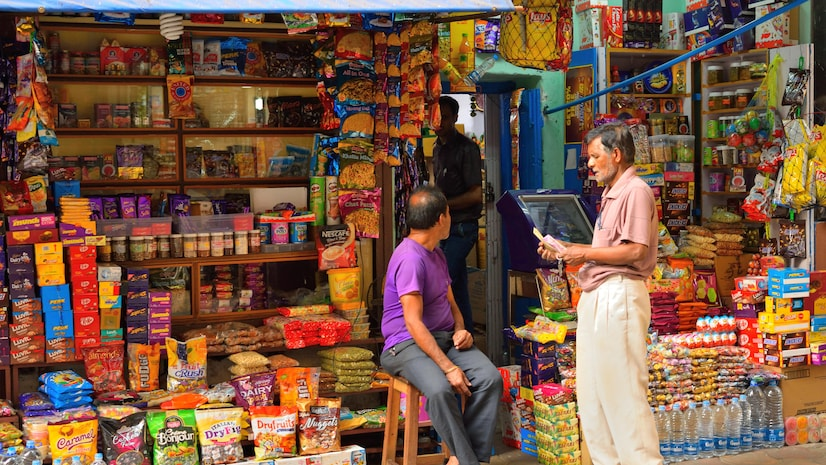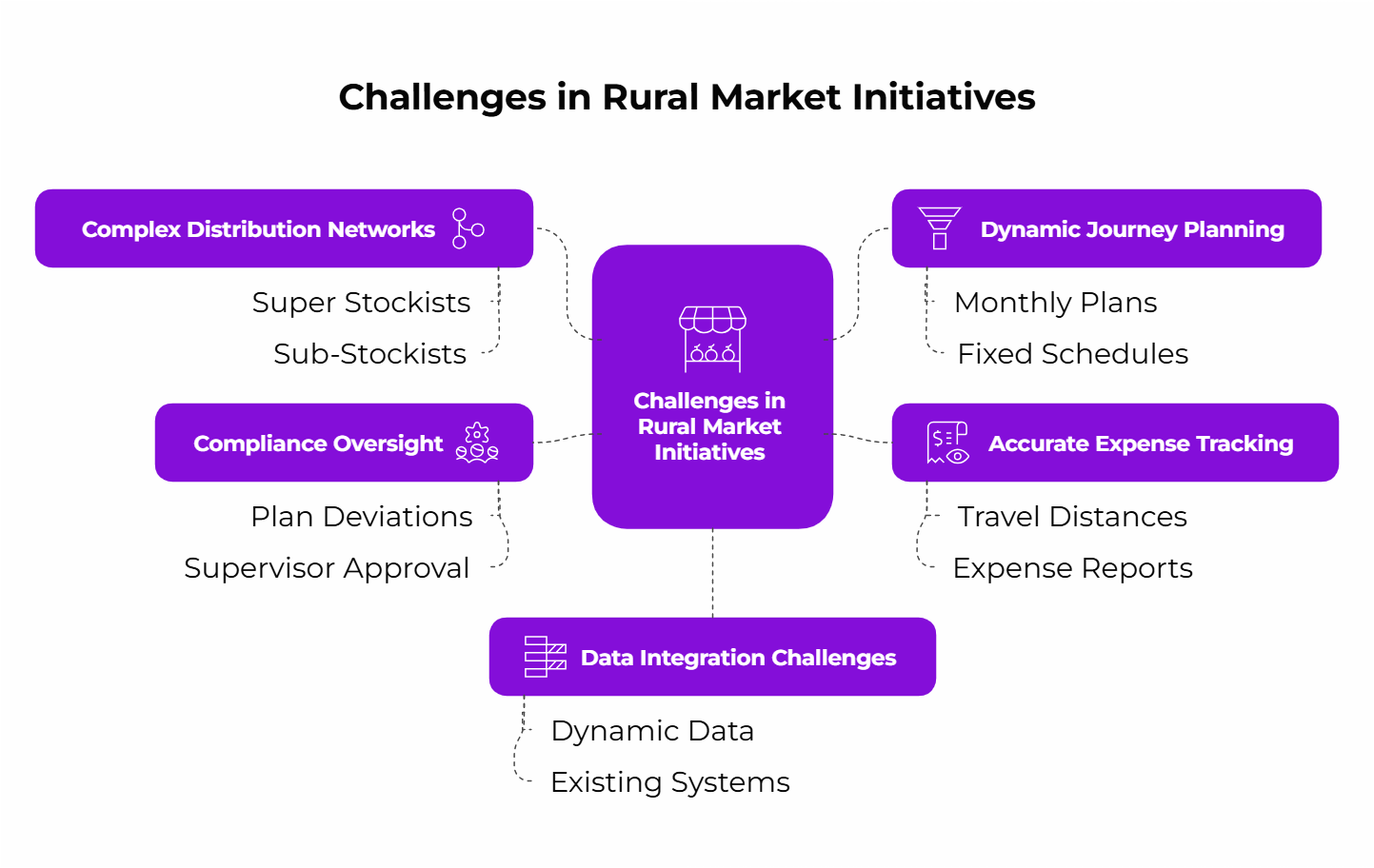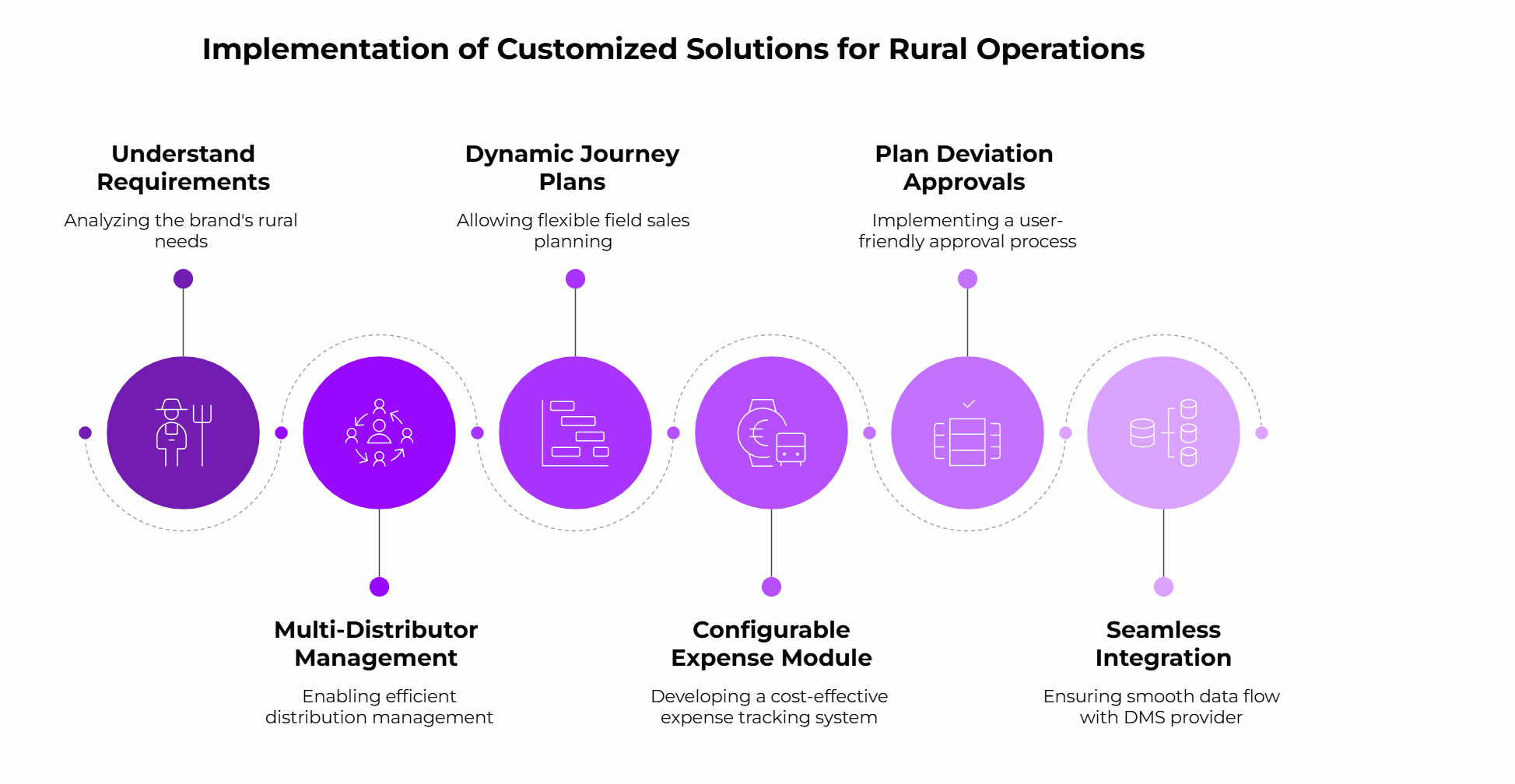
One of our clients, a leading global personal care brand, launched the Secondary Sales Representative (SSR) Initiative to strengthen rural market penetration by bridging the gap between distributors and retailers.
Unlike urban sales models, rural distribution operates through a multi-tiered network of super stockists and sub-stockists, requiring localized engagement and efficient order management. However, traditional Sales Force Automation (SFA) tools were not designed to address the complexities of rural sales. To support the SSR Initiative effectively, a customized solution was essential to streamline operations and enhance connectivity across the distribution chain.
As a product manager at Vxceed, leading the SSR initiative for one of the world’s leading personal care brands was a career-defining project for me.
Tackling the unique challenges of rural market operations pushed our team to innovate and helped us get a very clear and in-depth understanding of rural distribution. Let us walk you through how we transformed their operations to drive efficiency and growth.
The Challenges We Tackled
The brand's rural market initiative brought a unique set of challenges that required us to rethink traditional solutions.

- Complex Distribution Networks: The rural model introduced multi-level distributors, including super stockists and sub-stockists, unlike the single-distributor structure used in urban markets.
- Dynamic Journey Planning: Since the sales team covers rural markets which is usually a large area, they do not have a fixed journey plan. They need flexibility to create and adjust monthly journey plans instead of following fixed schedules.
- Accurate Expense Tracking: Monitoring travel distances and generating expense reports across vast rural areas without relying on high-cost tools like Google APIs.
- Compliance Oversight: Ensuring adherence to strict operational policies, including supervisor-approved plan deviations.
- Data Integration Challenges: Seamlessly integrating dynamic rural market data with their existing systems posed initial hurdles.
How We Solved the Problem
1: Planning and Implementation Phase
We started by understanding the intricate requirements of the brand’s rural operations, to make sure our solution addressed their specific needs.
Here are the key customizations we designed:

- Multi-Distributor Management: Redesigned the system to handle multi-level distribution, enabling efficient order placements and stock management for super stockists and sub-stockists.
- Dynamic Journey Plans: Introduced a feature allowing field sales teams to create, submit, and seek supervisor approval for monthly plans, offering flexibility while maintaining accountability.
- Configurable Expense Module: Developed a cost-efficient system to track travel distances using geocodes, eliminating the need for expensive Google APIs.
- Plan Deviation Approvals: Implemented a strict yet user-friendly process for supervisors to approve deviations in field plans.
- Seamless Integration: Worked closely with their DMS provider to resolve data flow and accuracy challenges, ensuring a smooth transition that caters to data management as per rural markets.
2: The Magic Moments
Seeing the impact of our tailored solution on their rural operations was immensely gratifying.
- Simplified Operations: Field teams appreciated the ease of planning and managing their tasks, reducing administrative work significantly.
- Enhanced Oversight: Supervisors gained better visibility and control through real-time approval processes.
- Scalable Innovation: The features developed for this project can now be adapted for other clients with similar rural market needs.
3: Impact and Learning
The SSR initiative transformed the brand's engagement with rural markets, improving compliance, control, efficiency, and overall operations. For me, it was a career-defining project that taught me the nuances of rural markets and the importance of listening to client needs.

